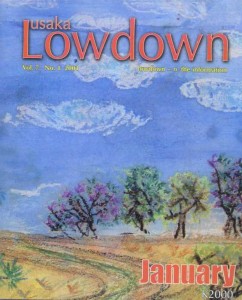 New Delhi, the capital of India, can best be described as a city of organised chaos. A visitor to this huge metropolis of between ten and fifteen million people can only marvel at the never-ending energy of the people which is reflected by the traffic that starts at 5 am and continues through to midnight everyday. Each morning, the streets are invaded by cars, buses, auto three-wheeler rickshaws, man pulled two-wheeler rickshaws, scooters, horse carts, pedestrians and a multitude of cows. Each person and animal is busy trying to reach their destination as quietly as possible and each uses the shortest route that can be found. Every available space on the street is occupied and there is a constant orchestra of hooters, horns and bells. To the uninitiated, traveling on the roads of New Delhi is a frightening experience. But my personal assessment is that the one rule everybody follows is “Move along and do not cause accidents”. The streets of Delhi have their fair share of beggars, street-kids and street families, but they are not as invasive as most – if you say ‘no’, they don’t persist, but move away to the next person.
New Delhi, the capital of India, can best be described as a city of organised chaos. A visitor to this huge metropolis of between ten and fifteen million people can only marvel at the never-ending energy of the people which is reflected by the traffic that starts at 5 am and continues through to midnight everyday. Each morning, the streets are invaded by cars, buses, auto three-wheeler rickshaws, man pulled two-wheeler rickshaws, scooters, horse carts, pedestrians and a multitude of cows. Each person and animal is busy trying to reach their destination as quietly as possible and each uses the shortest route that can be found. Every available space on the street is occupied and there is a constant orchestra of hooters, horns and bells. To the uninitiated, traveling on the roads of New Delhi is a frightening experience. But my personal assessment is that the one rule everybody follows is “Move along and do not cause accidents”. The streets of Delhi have their fair share of beggars, street-kids and street families, but they are not as invasive as most – if you say ‘no’, they don’t persist, but move away to the next person.
My interest was in the area around the New Delhi Railway Station, a vibrant world called Pahar Ganj. The people of this area trade on the streets and carry out their various businesses right up to midnight. There are hotels, restaurants, shops of all descriptions, wedding parlours complete with band and costumes, internet cafes, fruit-shops and all modes of public transport to cater for the huge number of people that visit this part of New Delhi. One major aspect is that a reasonable hotel room sells for US$ 20 a night compared to the five star option of US$ 250 upwards in the quieter part of the city. For me, Pahar Ganj reflected the “Real Delhi”.
Any visitor to New Delhi will note a constant cloud or mist of mild smoke which covers the city as a result of the huge amount of traffic. This causes one to develop a slight flu and a sore throat. I had to consume many lozenges to stay comfortable in the city.
The residents of New Delhi, called the ‘Delhiates’, take the phrase…”No Problem” to new heights. They will always try to find a solution to your problems.
The most striking thing about New Delhi, and possibly India in general, is that all forms of life are accommodated. It is not unusual to see cows in the middle of the streets, elephants plodding along the roads, camels and horses pulling carts, dogs cris-crossing the roads, invalids hobbling this way and that and nobody is hassled by this. I think this phenomenon is a reflection of the tolerance, co-existence and harmony which makes New Delhi special.
A short discussion with a senior citizen in New Delhi highlighted the energy in the people of this capital city. He suggested that the traffic police just pretend to control the traffic because everybody in the streets just goes about their business anyway. He also summed up that the life of a Delhiate revolves around three words – Hurry, Curry and Worry.
By Yusuf Dodia
Leave a Reply
You must be logged in to post a comment.